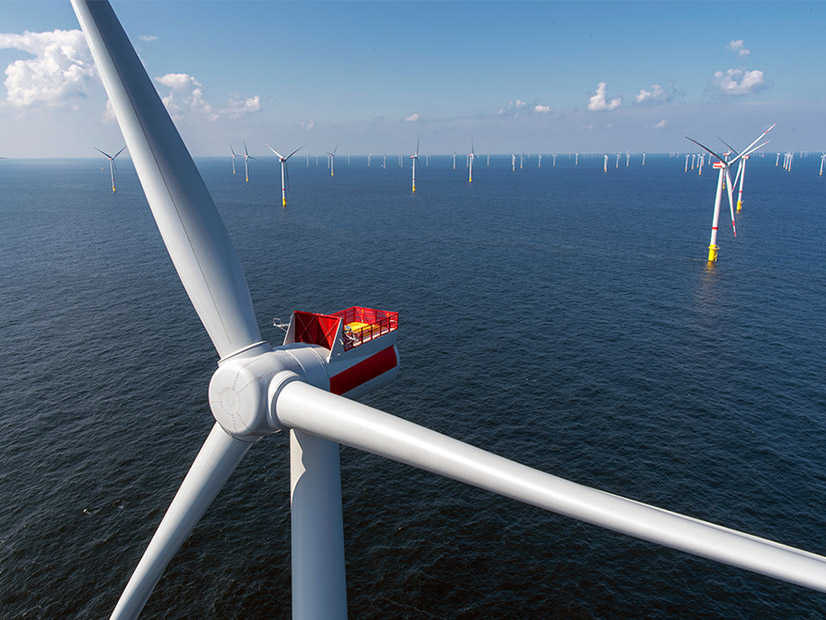California’s goal to meet its power needs with 100% renewable energy by 2045 makes a suggested offshore wind development target of at least 10 GW insufficient, a major developer said.
“When we look at … the estimated 145 GW of new renewables and storage that’s required to satisfy the [state’s] 2045 [zero-carbon] needs, then really, maybe 10 GW aren’t ambitious enough for California,” Paula Major, vice president of US Offshore Wind, said during a panel discussion Thursday at Reuters’ U.S. Offshore Wind 2021 conference.
She was reacting to a bill, introduced in February by State Assemblymember David Chiu (D), directing state agencies to develop a planning process for offshore wind. Chiu, also a participant in the Reuters conference, explained that the purpose of the legislation is to kickstart planning. California has no offshore wind development yet, partly because its continental shelf falls much more quickly into the ocean than the East Coast’s and partly because the U.S. Navy has objected to offshore development because it uses the Pacific Ocean for training.
“There have been many years of interest in offshore wind in California, from policymakers to industry to labor to environmentalists,” Chiu said. “But it has been challenging, in part because there are so many regulatory stakeholders at the local, state and federal level.
“What this bill does is set in motion the planning process for infrastructure and permitting. It would specifically ask the California Energy Commission to establish a statewide target, which is important because the East Coast has about 29 GW of state-mandated targets, but the West Coast [has] not yet done that.
“We want to put ourselves on the map as we’re having this national and international conversation. This bill also ensures that we’re looking at how we lift job creation and environmental considerations. There have been challenging conversations around how we move forward our environmental goals without undercutting our economy and jobs.”
Major responded that, while 10 GW is “a great starting point,” compared to Europe and the U.K., the U.S. as a whole is “quite conservative.” The U.K. has targeted 40 GW by 2030, while Europe wants at least 300 GW, she said, adding that her company, a division of Ireland-based Mainstream Renewable Power, has developed 5.3 GW globally.
“California has an immense wind resource, certainly in the north, and immense coastline, and we have to remember the technical benefits of offshore wind. It’s relatively consistent. It complements the solar production profile and the demand curve. And it has the added benefit of wildfire de-risking if we build transmission offshore,” she said.
Michael Olsen, senior director of business development for Equinor Wind US, a subsidiary of Norwegian state-owned Equinor ASA, described California’s position today as “at a point where the stars have aligned, and we are really ready to go.”
“Offshore wind in California, and more specifically floating offshore wind in California, is now more real than ever. We’re not talking about science fiction,” he said. Equinor has developed and built floating offshore wind in Europe and hopes to do the same in U.S. coastal waters.
Their comments came just days after the Biden administration’s announcement that two offshore California areas, a 399-square mile area off Morro Bay and a second area near Humboldt Bay, will be opened to wind development. (See related story, BOEM to Offer Leases for Calif. Offshore Wind.)
Lease auctions are expected in mid 2022, said Necy Sumait, chief of renewable energy for the U.S. Bureau of Ocean Energy Management’s Pacific Region. The agency has already been contacted by 14 companies, she said.
“Clearly the Central Coast is very attractive because of the existing transmission infrastructure there. The North Coast has really good winds, but it is transmission constrained. I think we’re going to pursue the North Coast and the Central Coast in a parallel track, and we will merge them at the right point in the bond process.
“I think now we have a path forward, to be able to allow offshore wind to play a role in the goals that California has for clean and carbon-free electricity,” she said.
California Energy Commissioner Karen Douglas said that in the wake of the Biden administration’s announcement, the commission is beginning to analyze “the value proposition of offshore wind in different quantities and how it may fit with other technologies” enabling zero-carbon electricity by 2045.
“We have been working with all of the state agencies that have any amount of jurisdiction over any aspect of offshore wind … the Coastal Commission, State Lands Commission, Department of Fish and Wildlife — for literally years to help prepare for this,” she said.
The National Renewable Energy Laboratory’s 2020 assessment of California’s offshore wind potential put the total at 201 GW, four times the highest recorded power demand on the state’s grid.
Whatever California’s ultimate offshore wind development, there will be problems onshore, starting with transmission, suggested panel moderator Sean Moran, a partner with the law firm Vinson & Elkins.
Major warned that without an integrated system to move offshore power, there will be future bottlenecks that will limit the development of the state’s full potential, something she said that has occurred in the U.K. because an integrated transmission system was not developed at the start, when developers began siting the first offshore projects.
Douglas said the Energy Commission’s initial determination is that the transmission grid in Central California will have no problem taking power from new offshore projects. Even the transmission system near Humboldt Bay, in Northern California, will be able to handle initial projects without major upgrades, though local distribution lines may have to be upgraded.
“The bigger transmission question comes when you start looking at larger numbers [of wind turbines] off the North Coast,” she said. “Those are important questions to answer, but we have some time to answer those questions.”


